 January 18, 2018 John E. Ross, KD8IDJ, Editor
| ||||||
ARRL CEO Tom Gallagher, NY2RF, to Retire ARRL's chief executive officer for the past 2 years, Tom Gallagher, NY2RF, announced his retirement as CEO, as the ARRL Board of Directors prepares to meet January 19-20. He will step down on March 2. Gallagher, who had earlier advised ARRL President Rick Roderick, K5UR, of his intention to resign, expressed his gratitude to President Roderick and the ARRL Board for giving him the opportunity to help guide the organization.
President Roderick expressed appreciation for Gallagher's contributions to ARRL. "ARRL is in a transition to a new generation for Amateur Radio. Change doesn't come easy," Roderick said. "Tom helped us in taking that step forward, and for that we are very grateful for his service to the League and to Amateur Radio," he said. Gallagher, 69, cited recent changes included in the new federal tax law that made it unattractive for him to continue working in Connecticut, where ARRL is headquartered. Among Gallagher's chief accomplishments during his tenure as CEO were creating an enhanced level of professionalism and efficiency in the organization that represents more than 150,000 US Amateur Radio operators. Gallagher also oversaw a significant turnaround in the organization's financial performance. Licensed in Pennsylvania in 1966 as WA3GRF (later N4GRF in North Carolina), Gallagher is a member of the West Palm Beach Amateur Radio Group. He has described himself as "an incurable HF DXer and inveterate tinkerer" and credits his first visit to the Franklin Institute's Amateur Radio station W3TKQ in 1963 for inspiring his interest in ham radio. Amateur Radio led to an early career in broadcasting. Gallagher joined ARRL following 3 decades as an international investment banker and financial services executive, succeeding long-time CEO David Sumner, K1ZZ. Read more. ARRL Board of Directors to Meet
The Board also will receive and/or hear -- and perhaps later consider recommendations from -- a wide range of reports from officers, the General Counsel, and committees and coordinators, including the Entry Level License Committee, the Official Observers Program Study Committee, and the Legislative Advocacy Committee. The Board also will hear and consider proposals to amend the ARRL Articles of Association and Bylaws. It will consider the application of SKNAARS to become the IARU member society for St. Kitts and Nevis. The Doctor Will See You Now! "Antenna Wire" is the topic of the latest (January 18) episode of the "ARRL The Doctor is In" podcast. Listen...and learn!
Every 2 weeks, your host, QST Editor-in-Chief Steve Ford, WB8IMY, and the Doctor himself, Joel Hallas, W1ZR, will discuss a broad range of technical topics. You can also e-mail your questions to doctor@arrl.org, and the Doctor may answer them in a future podcast. Enjoy "ARRL The Doctor is In" on Apple iTunes, or by using your iPhone or iPad podcast app (just search for "ARRL The Doctor is In"). You can also listen online at Blubrry, or at Stitcher (free registration required, or browse the site as a guest) and through the free Stitcher app for iOS, Kindle, or Android devices. If you've never listened to a podcast before, download our beginner's guide. A Message to Members from ARRL President Rick Roderick, K5UR In the last few weeks, the ARRL's Board of Directors has been the subject of an organized misinformation campaign. It is being orchestrated by a group of hams, some of whom are well-intentioned but have been misled. This effort, which consists of a series of mis-characterizations, initially dealt with (1) the ARRL Board's censure of an ARRL Director, and (2) some proposed revisions to ARRL's Articles of Association and Bylaws that are likely to be considered at ARRL's representative system of governance, which has worked exceptionally well in the advocacy and promotion of Amateur Radio and the interests of ARRL members for more than 100 years, is unchanged. And the legislative and other advocacy positions currently being pursued are critical to the long-term survivability of the Amateur Radio Service. The ARRL Board does seek thoughtful, informed input on policy issues concerning Amateur Radio from its roughly 150,000 members. ARRL's governance structure provides that regionally elected, volunteer Directors will represent the interests of the members in their respective Divisions, working collectively and collegially within our Board to make policy and to advocate their constituents' interests. ARRL's Board members hold cabinet meetings and forums at hamfests and conventions, and they staff ARRL booths at hamfests and conventions in order to find out what interests and concerns you have as ARRL members. They take this feedback from you, and they come to Board meetings twice a year to make policy for the organization. They work together collegially to develop the best policy decisions. This structure presumes that the Board's collective wisdom is far greater than that of any one Board member, and each Board member is obligated by our Articles and Bylaws to come to meetings with a good idea of what the members need and what is best for Amateur Radio as a whole. As is the case with most large, national nonprofit associations, ARRL Board meetings are not open to the public. It has always been that way, as a matter of necessity. That is because, at all such meetings, confidential issues such as spectrum protection, employee compensation, financial information, and FCC submissions are candidly discussed, and the members' interests at those meetings are advocated by the Directors on a representative basis. Unfortunately, it was necessary for the Board to take the highly unusual action of publicly censuring one of its members recently. The Board heard the allegations made by an ARRL member of what transpired at an Amateur Radio event; it heard reports from other amateurs who were there, and it heard all the information that the Director involved chose to present. Everyone had a chance to speak and to evaluate the presentations. The Board, in an 11 to 3 vote with one abstention, took action to protect the organization's integrity based on the information presented. This process and procedure are what nonprofit associations have to be prepared to employ, and do employ, to maintain order within their organizations and to ensure that the interests of the affected Director are protected as well. This is not a procedure that any nonprofit organization would conduct publicly. ARRL Directors are volunteers. They are smart, dedicated radio amateurs who each devote thousands of hours per year of their own time to representing you as best they can. -- ARRL President Rick Roderick, K5UR The ARRL Policy on Board Governance and Conduct of Members of the Board of Directors and Vice Directors has been drawn into question, probably as the result of the fact that the Board's censure decision was based upon a violation of that policy by the Director involved. The Policy is intended to protect the democratic decision-making processes by which ARRL has operated effectively for so long, and to set forth principles to guide an organization's decision making and the behavior of individual board members when acting on behalf of ARRL. When it was adopted by the Board a year ago, it was posted for ARRL members to read. The policy calls for honesty, integrity, transparency, confidentiality, and equity. The purpose of adopting such a statement formally is to provide employees, volunteers, and board members with guidelines for making ethical choices and to ensure that there is accountability for those choices. When board members of a nonprofit adopt a code of ethics, they are expressing their commitment to ethical behavior. It is intended to protect the Board's deliberations and to protect the staff from inappropriate actions by Board members. It seeks to preclude precisely the type of selective disclosures and unilateral and subjective characterizations of proposed Board actions that have happened recently. There is nothing at all insidious about the policy, which is subject to regular review and modification, as are all other ARRL organizational documents. As to the criticism of the proposed Articles and Bylaws changes, the Board has not yet considered them. It may or may not adopt some or all of the changes recommended by its Executive Committee or by an individual Director. Any responsible Board of Directors regularly reviews, amends and updates its Articles and Bylaws. And ARRL member input is welcome on all such subjects. Indeed, the recommended Article and Bylaws changes were not considered to be Board confidential. The problem, however, is that it is not fair to members, or to the representative Directors who have yet to evaluate them collectively, to have the proposals mischaracterized or misrepresented. ARRL Directors are volunteers. They are smart, dedicated radio amateurs who each devote thousands of hours per year of their own time to representing you as best they can. To those who try to suggest that the Board has abandoned its obligation to the members in favor of the organization -- you draw a distinction that doesn't exist. The Board absolutely understands that the members are the organization. The members of ARRL are always best served by an informed Board that works together to make policy that is in the best interests of the organization. The divisive tactics that are being used now, commenced through disinformation and a lack of candor, are harmful not only to the organization, but to Amateur Radio operators everywhere, the good work of the ARRL staff, and the Service that we love so much. Club Group Will Operate W1AW for Winter Field Day Maxim Memorial Station W1AW will host a group that will take part in Winter Field Day later this month. Sponsored by the Winter Field Day Association (WFDA), Winter Field Day will take place over the January 27-28 weekend, and it can be an opportune time to prep for ARRL Field Day in June.
For the hardier within the Amateur Radio ranks, Winter Field Day is an excuse to get out of the house and enjoy the great outdoors, and -- let's face it -- it's not cold and snowy everywhere during the winter. Gitto said that some Warren County ARC members will be operating WFD from Indian Lake, New York, using special event call sign W2C. The event, which got its start in 2007, is not restricted to North America. There are three entry categories -- indoor, outdoor, and home. The rules are similar to those for ARRL Field Day. Read more. Fox-1D Amateur Radio CubeSat Launches Successfully, Now Designated as AO-92 Right on schedule on January 12, the Indian Space Research Organisation (ISRO) Polar Satellite Launch Vehicle (PSLV) launched, taking AMSAT-NA's Fox-1D CubeSat and 30 other satellites on board toward a sun-synchronous orbit. By 27 minutes into the flight, confirmation came that all nanosatellites had been deployed. Fox-1D was in orbit!
In addition to a Fox-1 U/V FM transponder, Fox-1D will carry several university experiments, including a MEMS gyro from Pennsylvania State University-Erie, a camera from Virginia Tech, and the University of Iowa's High Energy Radiation CubeSat Instrument (HERCI) radiation mapping experiment. This week the Virginia Tech experimental camera payload returned some very clear photos of our planet as seen from low-Earth orbit. The PSLV launcher also carried the French PicSat, which includes a V/U FM transponder. The satellite will not be available for general use until the on-orbit checkouts are complete. Read more. Florida Ham Radio Club Aids Homeless During Cold Snap Uncharacteristically cold weather in central Florida in early January prompted members of the North Brevard Amateur Radio Club (K4NBR) to assist the area's homeless population. The New Year began with a bitter cold front descending upon central Florida, bringing below-freezing temperatures, especially concerning for those lacking regular shelter from the elements. NBARC members Ricky Deluco, K4JTT; Robert Ortiz, KJ4VEH; William Klosowski, K4SVT, and Michael Ellixson, KE4MWZ, set out in their own vehicles, searching the city of Titusville for homeless residents. For the next two evenings, and using Amateur Radio as communications, the group worked in the cold, wet weather for more than 12 hours, logging some 120 miles on the roads around Titusville.
One additional homeless person located late on the first night had a need for immediate medical attention and was transported to a local hospital. -- Thanks to Ricky Deluco, K4JTT Department of Defense Interoperability Communication Exercise Deemed a Success A November 2017 Department of Defense (DoD)-sponsored communications interoperability exercise involving Amateur Radio was a success, according to information received from US Army Military Auxiliary Radio System (MARS) Program Manager Paul English, WD8DBY. The November 4-6 drill, which focused on interoperability between DOD elements including MARS, other federal agencies, and the Amateur Radio community, simulated a coronal mass ejection (CME) event. Army and Air Force MARS organizations worked in conjunction with the Amateur Radio community, primarily on the 60-meter interoperability channels as well as on HF NVIS frequencies and local VHF and UHF, non-internet linked Amateur Radio repeaters.
Registration Now Open for HamSCI Workshop Registration now is open for a 2-day HamSCI -- the Amateur Radio citizen science initiative -- workshop February 23-24 at New Jersey Institute of Technology (NJIT) in Newark. The 2018 HamSCI Workshop will be held in the NJIT Campus Center Ballroom. Complimentary parking is available.
Frissell said all hams and scientists interested in ham radio science are welcome. "The aim of this workshop is to foster collaborations between the ham radio and the space science and space weather research communities through presentations, discussions, and demonstrations. This year's meeting will focus on solar eclipse analysis, ham radio data sources and databases, and the development of a 'personal space weather station.'" Read more. Past ARRL Great Lakes Division Director Jim Weaver, K8JE, SK Past ARRL Great Lakes Division Director Jim Weaver, K8JE (ex-WA8COA), of Mason, Ohio, died on January 14. An ARRL Life Member, he was 82. Weaver served as ARRL Great Lakes Division Director for 11 years, from 2003 until 2014, and he was a regular presence at Hamvention® and ARRL EXPO and moderated the ARRL Forum.
Within the Ohio Section, Weaver served as an Official Observer from 1997, and as a Public Information Officer from 1996. For about 10 years in the 1970s and 1980s, he wrote a column on Amateur Radio and the public for the Cincinnati Enquirer, "Ham Call." Until recently, he had served as an Official Emergency Station and an Official Relay station. Weaver was active in disaster communication and worked closely with the Red Cross in Cincinnati. At the Great Lakes Division Convention last October, Weaver was presented with the George S. Wilson III, W4OYI, Lifetime Achievement Award. Arrangements are pending. Read more. -- Thanks to Tom Delaney, W8WTD, and Steve Ewald, WV1X In Brief...
The K7RA Solar Update Tad Cook, K7RA, Seattle, reports: January 11-17 was a quiet week in space weather, with zero sunspots over the weekend and geomagnetic indicators rising only slightly. Compared to last week, average daily sunspot numbers declined from 11.9 to 7, but average daily solar flux went from 69.9 to 70.7. That seems counterintuitive, but these are all very low numbers anyway, and any change is slight. Also, there are no sunspot numbers between zero and 10 due to the arcane and somewhat confusing way they are counted; the minimum possible sunspot number, if there is any sunspot activity, is 11.
Predicted solar flux is 71 on January 18-24; 72 on January 25-27; 70 on January 28-February 17; 72 on February 18-23; and 70 on February 24-March 3. Predicted planetary A index is 5 on January 18; 8, 15, 18, and 12 on January 19-22; 8 on January 23-24; 5 on January 25-27; 10 on January 28; 5 on January 29-February 3; 8 on February 4-5; 5 on February 6-8; 8, 12, and 10 on February 9-11; 5 on February 12-14; 20 on February 15-16; 18 and 12 on February 17-18; 5 on February 19-23; 10 on February 24, 5 on February 25-March 2, and 8 on March 3. Sunspot numbers for January 11-17, 2018 were 12, 0, 0, 0, 12, 13, and 12, with a mean of 7. The 10.7-centimeter flux was 70.8, 70.9, 70.8, 70.5, 70.2, 71.1, and 70.9, with a mean of 70.7. Estimated planetary A indices were 2, 4, 7, 14, 9, 4, and 3, with a mean of 6.1. Estimated mid-latitude A indices were 2, 3, 7, 11, 7, 3, and 1, with a mean of 4.9. Send me your reports and observations. Just Ahead in Radiosport
See the ARRL Contest Calendar for more information. For in-depth reporting on Amateur Radio contesting, subscribe to The ARRL Contest Update via your ARRL member profile e-mail preferences. Upcoming ARRL Section, State, and Division Conventions
Find conventions and hamfests in your area.
. .
Subscribe to...
Free of charge to ARRL members...
| ||||||
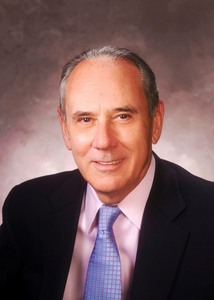 "It has been my great privilege to serve in this capacity for 2 years, and I am deeply grateful to the Board and President Rick Roderick, K5UR, for their support and encouragement," Gallagher said.
"It has been my great privilege to serve in this capacity for 2 years, and I am deeply grateful to the Board and President Rick Roderick, K5UR, for their support and encouragement," Gallagher said. The ARRL Board of Directors will hold its 2018 Annual Meeting January 19-20 in Windsor, Connecticut. The first order of business will be the election of officers. The Board will elect candidates to the volunteer posts of ARRL President, First and Second Vice President, and International Affairs Vice President, as well as to the offices of Secretary, Treasurer, Chief Executive Officer, and Chief Financial Officer. CEO Tom Gallagher, NY2RF, has announced that he will retire on March 2. The Board will evaluate and determine the next steps to take in a search for his replacement when it meets this week.
The ARRL Board of Directors will hold its 2018 Annual Meeting January 19-20 in Windsor, Connecticut. The first order of business will be the election of officers. The Board will elect candidates to the volunteer posts of ARRL President, First and Second Vice President, and International Affairs Vice President, as well as to the offices of Secretary, Treasurer, Chief Executive Officer, and Chief Financial Officer. CEO Tom Gallagher, NY2RF, has announced that he will retire on March 2. The Board will evaluate and determine the next steps to take in a search for his replacement when it meets this week. Sponsored by
Sponsored by 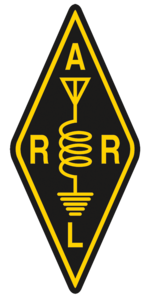 the upcoming ARRL Board meeting and which were circulated by a member of the Board. None of the proposed Article and Bylaw changes has yet been addressed by the Board of Directors. More recently, other equally erroneous and false statements have been made with respect to completely unrelated issues, in an effort to draw into question ARRL's decision-making processes. The principal suggestion is that ARRL operates under some "cloak of secrecy." The criticism is unfair and undeserved.
the upcoming ARRL Board meeting and which were circulated by a member of the Board. None of the proposed Article and Bylaw changes has yet been addressed by the Board of Directors. More recently, other equally erroneous and false statements have been made with respect to completely unrelated issues, in an effort to draw into question ARRL's decision-making processes. The principal suggestion is that ARRL operates under some "cloak of secrecy." The criticism is unfair and undeserved.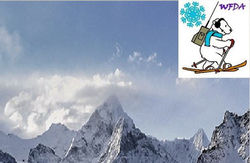 "Assuming the weather holds out, a group of hams will be here the last weekend of January to operate W1AW in the Winter Field Day," W1AW Station Manager Joe Carcia, NJ1Q, said this week. Headed by Frank Gitto, KA5VVI, the group will consist of members of the Warren County Amateur Radio Club (
"Assuming the weather holds out, a group of hams will be here the last weekend of January to operate W1AW in the Winter Field Day," W1AW Station Manager Joe Carcia, NJ1Q, said this week. Headed by Frank Gitto, KA5VVI, the group will consist of members of the Warren County Amateur Radio Club (.jpg) "At about 0517 UTC, the satellite came to life, and its antennas deployed over the North Pole," AMSAT
"At about 0517 UTC, the satellite came to life, and its antennas deployed over the North Pole," AMSAT 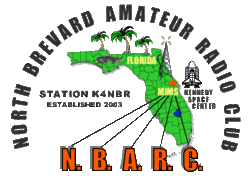 The Disabled American Veteran Center in Titusville had opened its doors as a cold weather shelter and offered a warm place to sleep and eat. The ham radio group alerted local law enforcement, so they were aware of the effort and in the hope that on-duty officers might also reach out. The group was able to locate five homeless individuals on its first evening tour of the town and provide them with transportation out of the cold. Local police also contacted the team to help and to provide transportation for other homeless individuals located by on-duty officers.
The Disabled American Veteran Center in Titusville had opened its doors as a cold weather shelter and offered a warm place to sleep and eat. The ham radio group alerted local law enforcement, so they were aware of the effort and in the hope that on-duty officers might also reach out. The group was able to locate five homeless individuals on its first evening tour of the town and provide them with transportation out of the cold. Local police also contacted the team to help and to provide transportation for other homeless individuals located by on-duty officers.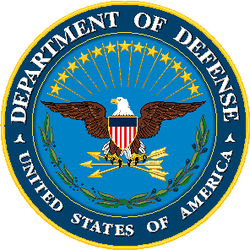 The Amateur Radio portion of the exercise kicked off with a high-power information broadcast on 60-meter channel 1 (5,330.5 kHz) from a military station on the east coast and the Fort Huachuca HF gateway station in Arizona. The high-power broadcast provided basic exercise information and requested that amateur stations make contact with MARS stations on 60 meters and provide county-by-county status reports for the 3,143 US counties and county equivalents, in order to gain situational awareness and to determine the extent of impact of the scenario. Radio amateurs also were given the opportunity to submit a reception report and receive a QSL card.
The Amateur Radio portion of the exercise kicked off with a high-power information broadcast on 60-meter channel 1 (5,330.5 kHz) from a military station on the east coast and the Fort Huachuca HF gateway station in Arizona. The high-power broadcast provided basic exercise information and requested that amateur stations make contact with MARS stations on 60 meters and provide county-by-county status reports for the 3,143 US counties and county equivalents, in order to gain situational awareness and to determine the extent of impact of the scenario. Radio amateurs also were given the opportunity to submit a reception report and receive a QSL card.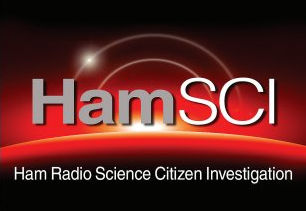 "The 2018 HamSCI workshop will focus on results of the 2017 Great American Eclipse and the development of a personal space weather station," said Nathaniel Frissell, W2NAF, Assistant Research Professor at NJIT's Center for Solar-Terrestrial Research. "We are especially looking for speakers with presentations showing analysis of 2017 Great American Eclipse ionospheric observations, ideas and proposals for the design and implementation of a personal space weather station. We will also accept other presentations related to Amateur Radio and science." Frissell expects that presentations will run between 20 and 30 minutes in length.
"The 2018 HamSCI workshop will focus on results of the 2017 Great American Eclipse and the development of a personal space weather station," said Nathaniel Frissell, W2NAF, Assistant Research Professor at NJIT's Center for Solar-Terrestrial Research. "We are especially looking for speakers with presentations showing analysis of 2017 Great American Eclipse ionospheric observations, ideas and proposals for the design and implementation of a personal space weather station. We will also accept other presentations related to Amateur Radio and science." Frissell expects that presentations will run between 20 and 30 minutes in length. 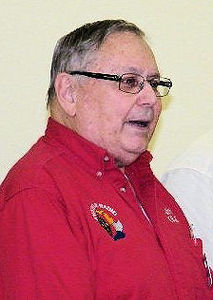 During his time on The ARRL Board of Directors, Weaver served on the Administration and Finance, Programs and Services, and CEO Candidate Screening committees. Early in his years on the Board, Weaver was one of the initial members of the Ad Hoc Committee on Grassroots Lobbying.
During his time on The ARRL Board of Directors, Weaver served on the Administration and Finance, Programs and Services, and CEO Candidate Screening committees. Early in his years on the Board, Weaver was one of the initial members of the Ad Hoc Committee on Grassroots Lobbying. The theme for
The theme for  The
The 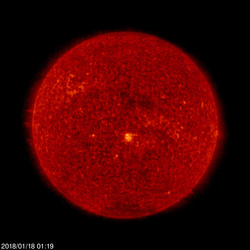 Geomagnetic indicators were quiet, with average daily planetary A index moving from 5.4 to 6.1, and mid-latitude A index from 4.6 to 4.9.
Geomagnetic indicators were quiet, with average daily planetary A index moving from 5.4 to 6.1, and mid-latitude A index from 4.6 to 4.9.







